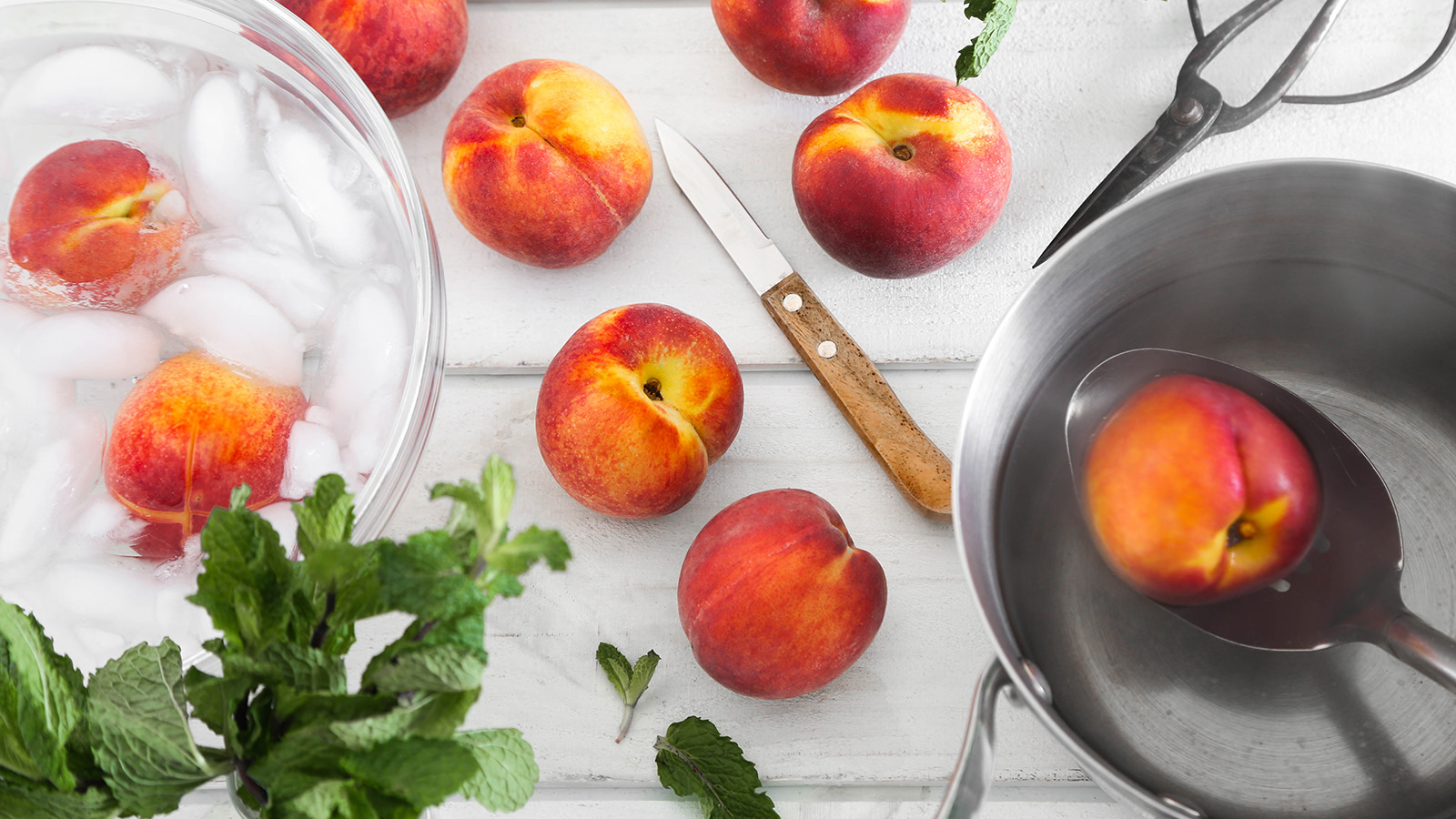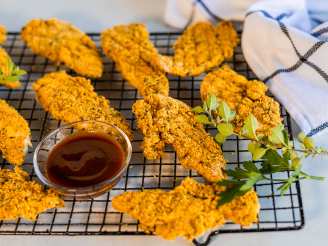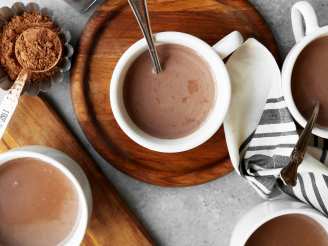Damson Plum Jam
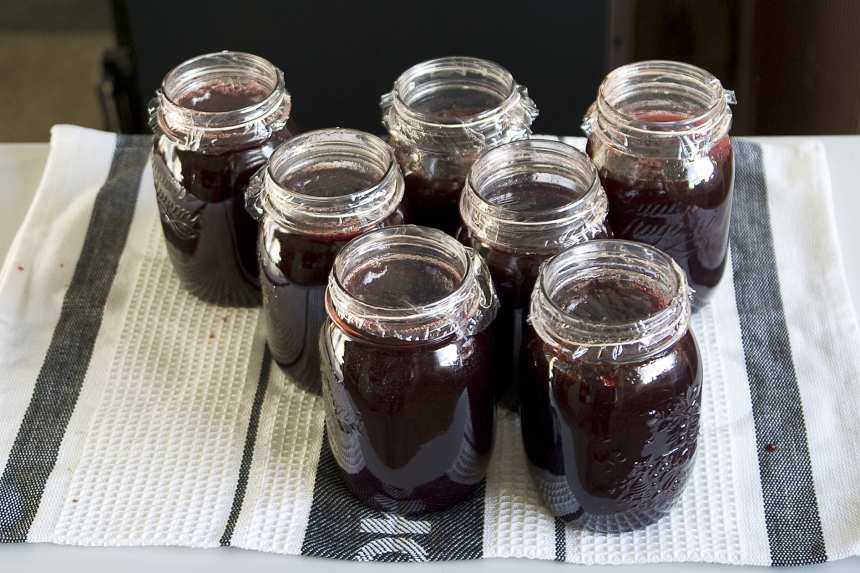
photo by Yankiwi

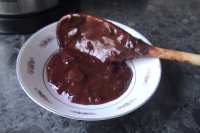
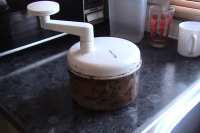
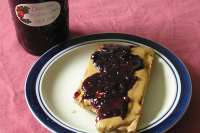
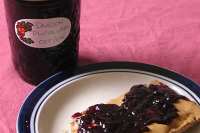
- Ready In:
- 1hr
- Ingredients:
- 3
- Yields:
-
7 250ml jars
- Serves:
- 112-128
ingredients
directions
- Wash and pick over the plums.
- Combine the plums and the water.
- Bring to a boil and cook 15 minutes, stirring constantly.
- Allow to cool enough to handle - or completely, if you like - and fish out the pits (I put them through a food mill, and then removed the pits from the remaining pulp).
- Return the pulp to the rest of the jam once the pits are out.
- Meanwhile, put the jars into a canning kettle and cover with water to one inch above the tops of the jars.
- Bring to a boil, boil 10 minutes to sterilize.
- Return the plums to the jam kettle, and bring them back to the boil. Add the sugar to the plums, stirring to dissolve.
- Boil to jam stage, about 20 minutes. Test for the gelling point with one of the following methods: Temperature test — Use a jelly or candy thermometer, and boil until mixture reaches the following temperatures at altitudes of: Sea level to 1,000 feet — 104°C/220°F; 1,001 feet to 2,000 feet — 103°C/218°F
- Sheet or spoon test — Dip a cool metal spoon into the boiling jelly mixture. Raise the spoon out of the steam, about 12 inches above the pan. Turn the spoon so the liquid runs off the side. The jelly is done when the syrup forms two drops that flow together and sheet or hang off the edge of the spoon.
- I like the"sheet" test.
- As the jam cooks, remove any pits you may have missed.
- Remove from the heat and stir and skim 5 minutes.
- Pour into hot sterilized jars and seal with lids sterilized according to the manufacturers directions.
- (Generally, boiled for 5 minutes.) Place jars of jam back in boiling water bath and boil for 5 minutes.
- Let cool, and store when the jars have sealed.
Questions & Replies
Got a question?
Share it with the community!
Reviews
-
I agree with you on most every point. It IS the best jam in the world if it's not over-sweetened, which yours doesn't seem to be. (Though I'm not sure what you mean by 2 litres of plums. Is that whole plums or the puree?) I do batches of 4-5 pounds of fresh plums, cook them in only ~1/2 cup of water (they start exuding their own moisture so quickly, and the more water, the longer it takes to cook the jam down. To this ~8-9 cups of pulp I add only 4-5 cups sugar--the greater amt. if many of the plums are barely ripe and very tart. I heartily agree with your method of removing the pits. It's the easiest way to seed them, and with almost no waste. A food mill is a disaster and trying to seed them raw takes forever and you’ll probably cut your slippery fingers. Put a little bowl close by. Reach into the cooled pulp with one hand and feel for seeds (they're mostly on the bottom), press them w/fingertips--to rub off clinging flesh--one at a time into the fingers of your other hand to drop in bowl. (You’ll get the hang of it. Kinda fun, actually, and doesn't take but 5-10 minutes.) (If I look at the bowl of removed seeds and think too much pulp is clinging to them, I pour about 1/4 cup boiling water over them, rub them around in it to loosen the flesh, pour it all into a mesh strainer over the pot and press out every delicious drop. ) Maybe the reviewer who thought this a "major headache" should consider that this is all one has to do to to tidy little Damsons: no peeling, coring, straining out fine seeds (with lots of waste) as with blackberries. They are almost never bruised, I've never seen insect signs on a single one. A bird nip or two on the tops of a handful, but the birds apparently don't like them because they stop with a nip. I gave your recipe 4 stars and not 5 because I can't imagine why you would put the pulp through a food mill? The delicate shreds of tender skin give the jam an exquisite texture and the pectin is concentrated in the peel. One more thing: I find the sheeting-from-spoon test to be less reliable than keeping 2-3 small saucers in the freezer and testing by the way the jam mounds & if the "Red Sea" stays "parted" when you run a finger through the mound. Thanks for some good tips. Damson's are getting almost impossible to buy in the NE USA, and I live in fear that every year will be the last I can locate some.
-
I fix my damson jam almost the same ,but with less water, I am blessed to have 2 damson trees which I planted a few years ago.It was long time about 7 years before they had fruit.I have to spray them every year to keep the worms out of them.you have to spray the tree before they bloom and also after the tree blooms. the tree will have plants that come up from the roots of the tree that you can transplan,one year I harvested 20 lbs of fruit and shared with others.I am diabetic so I give most of my jam away as it is hard to find anymore.
-
Getting rid of the pips is really easy. Get yourself a hand-powered Culinare "blender", toss in a handful or two of Damson plums and shred them by hand. This chops up the flesh into a shredded pulp, rather than a mush, which gives a great texture to the jam. Make yourself a sieve by drilling holes in a plastic bowl. A 9mm drill bit (3/8")worked for me, just small enough to prevent the pips getting through. Stir the pulp around with a wooden spoon, and you're left with the pips in the sieve and a negligible amount of fruit pulp. I processed a 10-liter bucket of fruit in about 30 minutes. If you let the pulp sit overnight, the purple and green or yellow takes on a beautiful red hue. I added sugar, poured some onto baking paper and put it in the hot summer sun to turn into yummy fruit leather. The rest was made into jam.
-
First you need to know the difference between Damson plums and Santa Rosa plums. True Damson plums are elongated, have a very deep purple skin with the appearance of a slight grey dusting. Polish the skin, and the plum becomes irridescent. The flesh, when at the best ripness is a deep gold. Flavor is very sweet with a touch of honey. Damsons like a freeze in the winter and water in the spring ergo, they are native to the Pacific Northewest. Santa Rosa plums are spherical, with a white to yellow flesh. They are tart and no amount of sugar will overcome this without destroying the plum flavor. Since the skin if the Santa Rosa is not a deep purple, you will never get a rich purple jam from them either. Santa Rosas are native to California. Best to use them in cobblers.<br/>Jam the Damson. 1. Get a kitchen scale. 2.Remove the pits by slicing the plum lenghtwise. (easy) 3.DO NOT try to take skin off as that takes away color and flavor. 4. Prepare 4 pounds of pitted plums. 5.You should have a Cuisinart or similar to easily slice RAW plums.6.Put the 4 pounds of sliced, raw plums in a saucepan with 1/2 cup water and simmer for about 20 min. until cooked but NOT a pulp or puree. 7. To make jam use 5 cups of cooked fruit to 6 cups of sugar and 3 Tbs. lemon juice. If you use pectin follow that recipe (I do and make 8 8oz. jars). If you do not use pectin (plums do have a fair amount) combine mixture from step 6 with 5 cups of sugar, stir to disolve sugar and cook rapidly to boiling point, mixture should begin to thicken, and continue to cook, stirring to prevent sticking. When thick, remove from heat and ladel into hot (boiled) jars and seal. Then put in a waterbath canner for 10 minute.
see 5 more reviews
RECIPE SUBMITTED BY
Jenny Sanders
Cambridge, Ontario
I love to garden, both perennials and vegetables. I am always looking for recipes to fiddle with, especially good simple vegetable dishes. I try to use organic ingredients as much as possible.





